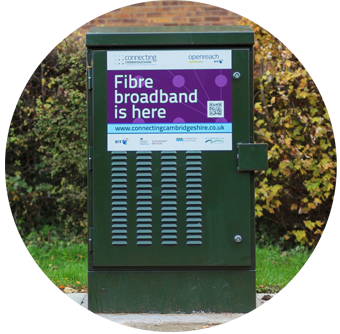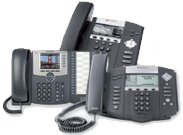Page under construction...
Page under construction...
Fibre-WiMAX, or Fibre-WiFi, or Microwave Broadband, or Radio Broadband, or Fixed Wireless Internet Access.
WHAT’S IN A NAME?
Broadband services, delivered wirelessly, have been around for a number of years and are referred to by a variety of names. However, it is not until very recently, following the extraordinary growth of the internet and its role in business, that this wireless technology has grown in importance.
Whilst cities and urban locations have enjoyed increasing bandwidth speeds, the limitations of a wired broadband service in more rural areas has restricted companies from the benefits of the digital economy. ADSL download speeds of less than 1Mb, running over BT’s copper network, are not unusual. The roll-out of BT’s FTTC (fibre to the roadside cabinet) programme is painfully slow. So, unless companies are prepared to invest very significant sums to install and run a dedicated fibre-optic ethernet service, fast internet access and all it can offer is beyond the budget of many smaller organisations and still remains a dream.
THERE IS A SOLUTION
A proven alternative technology, immediately available and at an affordable price, Fibre WiMAX opens up the world of high speed internet access to small businesses and organisations. WiMAX has been specifically designed for high-speed networking and is capable of providing speeds of 1Gb and more. But, like radio reception, performance reduces over distance and also as it passes through solid structures, such as walls. However, the more powerful the transmitting equipment, the greater is the effectiveness of this radio microwave broadband service.
 WHAT IS FIBRE WiMAX ?
WHAT IS FIBRE WiMAX ?
Fixed wireless broadband is the operation of a wireless system using directional antennae to connect two fixed locations with a radio link or a laser bridge. The link then enables data to be transferred at high speed, using microwave technology. This means that a company’s local area network can be connected to the internet, with a router, in exactly the same way as a copper or fibre cable connects a building to the internet.
Currently, there are two primary consumer technology types: WiFi (IEEE 802.11); and WiMAX (IEEE 802.16). These are based on a series of wireless broadband standards written by the Institute of Electrical and Electronics Engineers (IEEE). WiFI is used more for domestic and local area networks, whilst WiMAX is used for Hotspots and for fixed, point-to-point connections. The WiMAX point-to-point signal transmissions run over a microwave platform and do not require satellite feeds or local telephone services.
WHY CHOOSE FIBRE WiMAX ?
Today, the growth of the digital economy is an essential part of the Government’s strategy to speed up the country’s economic recovery. Statistics show that where companies are adopting the internet as part of their business development, not only does it provide a platform for growth, there is also the potential to increase employment. Hence, the Government are keen to encourage connection to high-speed internet access and are investing some £200 million into a voucher scheme running through until March 2016, which offers up to £3,000 towards the installation cost of high-speed internet access.
There are a number of reasons why a wireless internet service might be the right choice for your business and enable you to benefit from internet services such as cloud computing;
- The local ADSL copper-based service may only be capable of delivering low bandwidth speeds.
- There is no schedule for upgrading the local BT network to fibre to the cabinet.
- The cost of installing a dedicated service such as EFM (ethernet first mile, based on a copper connection) or a fibre-optic leased line providing ethernet connection is prohibitive. The ongoing rental cost of an ethernet service may be beyond the budget of smaller businesses.
- Fibre WiMAX can be installed in as little as 10 working days. EFM (if it is available, and in rural areas it rarely is) is likely to take at least 25 working days. Leased lines will take a minimum of 75 working days.
- A radio broadband service is symmetrical, which means that with our ethernet connection, the download and upload speeds are the same. Speeds of up to 1 Gb (and more) are available.
- Fibre WiMAX is flexible, affordable and offers carrier-grade reliability in all weather conditions and temperatures. Equipment is easily installed; it is moveable; it is high-performance; it requires no expensive end-user equipment.
- A complete range of shared (contended) services and speeds are available from Polaris Telecoms, at prices from £45 pm. Ethernet services, which can also carry SIP trunks for phones (ISDN replacement technology) are available from £195 pm.
THE BUSINESS CASE
Too often the argument surrounding business communications is about technology, not the business outcomes. Anyone running a business doesn’t really care about the technology. New developments may be very interesting, but business owners are interested in service availability, reliability, support and price.
- Carrier grade wireless broadband is a technology of bombproof reliability that can be very quickly rolled out, even in remote locations.
- Wireless access networks can deliver four nines reliability, or 99.995 per cent uptime.
- Using a fixed wireless access network and a fibre core, carrier grade wireless broadband can be put in place very quickly, with the same, or better performance and management characteristics of fibre.
The misconceptions about wireless services can probably be attributed to consumer-level, personal experience. Anyone who has been frustrated by a mobile call dropout or Wi-Fi failures at home (which is everyone) might not fully appreciate claims of carrier-grade, gigabit wireless connections. But carrier grade means exactly that: it is bombproof.
DISPELLING THE MYTHS
Conventional wisdom used to see microwave as a useful temporary solution for difficult terrain or third world countries – providing a quick, cost-effective connection while cables are being planned and laid.
“Second Best?”
Forget microwave as “second best”. The fact is that now, many critical networks that require high-speed internet access are abandoning fibre in favour of microwave – because microwave is faster! For example, in the financial sector and looking at the world’s most vital financial corridor, Chicago to New York, the time for a round trip by the fastest available fibre network stood at 13.1 milliseconds. A microwave network achieved the same in 8 milliseconds. For High Frequency Trading (HFT) that 5.1 millisecond advantage could make or break a fortune.
You could argue that most typical business applications are not as sensitive to the odd millisecond of latency. However, the world of finance has a way of setting almost laughably high performance standards that eventually filter down, until every business wants them.
“But surely, fibre networks transmit at the speed of light. Nothing goes faster than light, does it?”
That’s also true. However microwaves too travel at the speed of light. The difference is that light in fibre is travelling through glass, while microwaves are travelling through air – and the glass fibre slows down the speed of light by 30 to 40 per cent. What’s more, a microwave link travels in a dead straight line between two points, where the typical fibre link has to take a route bound by practical installation factors such as bends trenching, rights of way and installation cost.
“What about weather conditions – aren’t they supposed to degrade microwave links?”
That’s an old story, dating back to the days of analogue transmission. Today’s packet microwave links benefit from digital error detection and clever algorithms that allow microwave to be used reliably in parts of the world with extreme weather conditions – where even buried fibre can be subject to things like earth tremors and frost damage. The greater speed, lower cost and flexibility of installing microwave instead of fixed lines also make it a simple matter to add extra redundant links for outstanding reliability.
“So why was I led to believe that wireless transmission slows down the network and adds latency?”
That’s probably because many people’s experience of wireless access has been via satellite links. These do add latency, because the signal has to travel up to a satellite and back. The typical geo-stationary satellite, as used for communications, is over 35 thousand kilometres above the equator and this creates nearly a quarter of a second delay.
So forget the old stories and look back at those figures for Chicago to New York to get a better idea of microwave’s potential – and it is still getting faster as they work on new ways to reduce the number of hops or to speed them up.
A lot has happened since the days when microwave was a “second best” – and a lot is still happening to make microwave the number one choice for business.
Discover Business-grade, High-speed, Internet Access Harness Cloud Services - Converge Data and Voice
![]() Our family of high-speed IP connectivity services connect businesses directly to our next generation national network and to the internet.
Our family of high-speed IP connectivity services connect businesses directly to our next generation national network and to the internet.
![]() More and more applications are moving from servers on customer premises to the cloud and it is essential to have high-performance, reliable data connections.
More and more applications are moving from servers on customer premises to the cloud and it is essential to have high-performance, reliable data connections.
Polaris Telecoms offer the full spectrum of broadband and ethernet services, based on NGA (next generation access) broadband, fibre-optic ethernet and microwave connections. Our converged services allow data and voice traffic to pass over one data connection, but with a quality of service assurance that voice connections are ring-fenced and unaffected by other data activity.
DOWNLOAD A BROCHURE

We specialise in providing high performance, internet access solutions for organisations across the UK. Our business grade networks are optimised for commercial users, enabling them to take advantage of data, cloud computing, WAN connections, VoIP and video conferencing.
![]() To find out more about the benefits of our data services, click on the download link icon to the right.
To find out more about the benefits of our data services, click on the download link icon to the right.
NEXT GENERATION NETWORK - BUSINESS BROADBAND
 Whether you are using broadband for your office or for your home workers, the combination of our varied product choice, together with the NGA network and our highly skilled, UK based support technicians, make our broadband services a must-have for your organisation.
Whether you are using broadband for your office or for your home workers, the combination of our varied product choice, together with the NGA network and our highly skilled, UK based support technicians, make our broadband services a must-have for your organisation.
Polaris Telecoms offer a wide range of affordable, business grade services to meet the different bandwidth and usage needs that you may require.
These include:
ADSL Business 2+; ADSL Business 2+ Premium; and ADSL Business M Premium. Over 99% of UK premises have access to these services.
SUPERFAST FIBRE BROADBAND
Our latest Fibre Broadband technology (FTTC – fibre to the cabinet) is now available to over 16 million premises in the UK. Fibre Broadband offers download speeds of up to 80 Mb and upload of 20 Mb. This level of access now makes cloud computing accessible to many businesses and smaller organisations. Take advantage of this new technology and stay ahead of your competitors.
CONVERGED VOICE AND DATA
At the heart of our broadband technology is an affordable solution, enabling you to consolidate and converge your data and voice networks through one service. No need for a second line. A single internet access, providing a 24/7 managed service connected through a Cisco 887 router and backed up by our SLA. Converged ADSL broadband is available to 85% of UK premises. Converged FTTC is available to over 16 million premises in the UK.
What Are The Advantages ?
- Converged broadband or FTTC is the ideal platform for migrating to IP telephony, with all the operating benefits offered by this new voice technology.
- The services support SIP trunks the IP replacement for ISDN phone network infrastructure.
- Reduce your supplier and network management costs. Remove maintenance requirements normally associated with your legacy voice infrastructure.
-
Increased bandwidth and performance will help your business to move into “the cloud”.
NEXT GENERATION NETWORK - BUSINESS BROADBAND
 Whether you are using broadband for your office or for your home workers, the combination of our varied product choice, together with the Next Generation Network and our highly skilled, UK based support technicians, make our broadband services a must-have for your business.
Whether you are using broadband for your office or for your home workers, the combination of our varied product choice, together with the Next Generation Network and our highly skilled, UK based support technicians, make our broadband services a must-have for your business.
Polaris Telecoms offer a wide range of affordable, business grade services to meet the different bandwidth and usage needs that you may require.
 SUPERFAST FIBRE BROADBAND
SUPERFAST FIBRE BROADBAND
Our latest Fibre Broadband technology is now available to over 16 million premises in the UK. Fibre Broadband offers download speeds of up to 80 Mb and upload of 20 Mb. This level of access now makes cloud computing accessible to many businesses and smaller organisations. Take advantage of this new technology and stay ahead of your competitors.
 ASSURED - OUR MANAGED BROADBAND SERVICE FOR VOICE
ASSURED - OUR MANAGED BROADBAND SERVICE FOR VOICE
Our Assured IP service is a specialist broadband product, designed to support our IP telephony services – Horizon and SIP Trunks – and includes a Cisco 887VA-M router, monitored 24/7 by our UK based Network Operation Centre. The prioritised voice traffic ensures call quality and is underpinned by an SLA. The service is priced to be affordable to smaller organisations, enabling you to adopt the latest voice technology and benefit from the many operational advantages on offer.
BROADBAND WITH POLARIS TELECOMS

We offer the full spectrum of broadband services that include: superfast Fibre Broadband (FTTC); Converged Broadband; and our Assured service – dedicated to voice.
Polaris Telecoms specialise in providing high performance, internet access solutions for organisations across the UK. Our business grade networks are optimised for commercial users, enabling them to take advantage of data, cloud computing, WAN connections, VoIP and video conferencing.
CONVERGED VOICE AND DATA
At the heart of our broadband technology is an affordable solution, enabling you to consolidate and converge your data and voice networks through one service. No need for a second line. A single internet access, providing a 24/7 managed service connected through a Cisco 887 router and backed up by our SLA. Converged broadband is available to 85% of UK premises.
What Are The Advantages ?
- Converged broadband is the ideal platform for migrating to IP telephony, with all the operating benefits offered by this new voice technology.
- Reduce supplier and network management costs, by removing maintenance requirements with your legacy voice infrastructure.
- The service can support up to 30 concurrent calls, be they running over SIP trunks or our Horizon hosted phone system.
-
Increased bandwidth and performance will help your business to move into “the cloud”.
More Articles...









